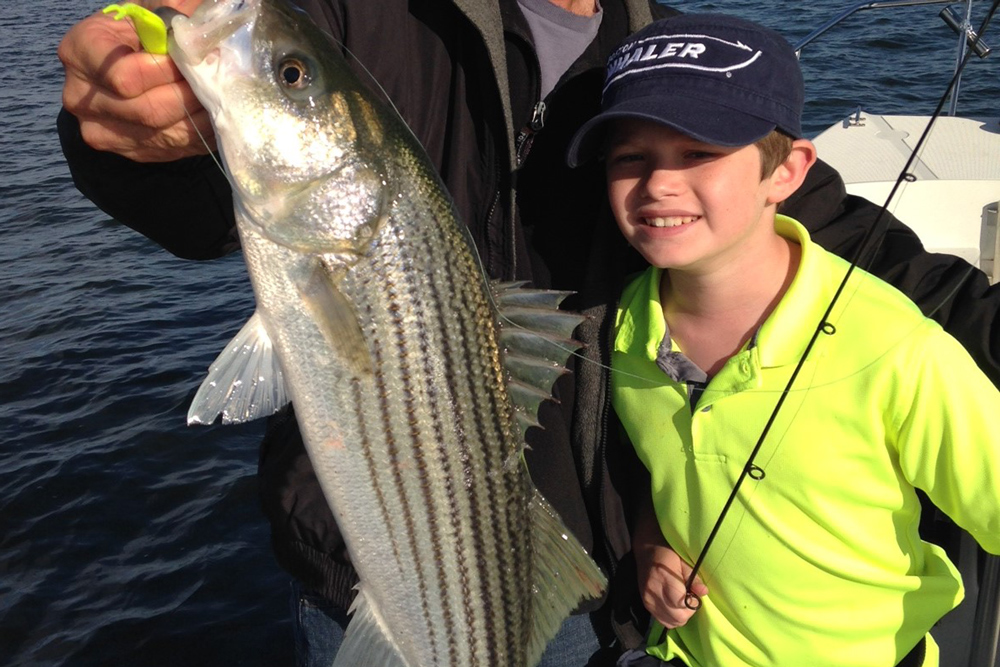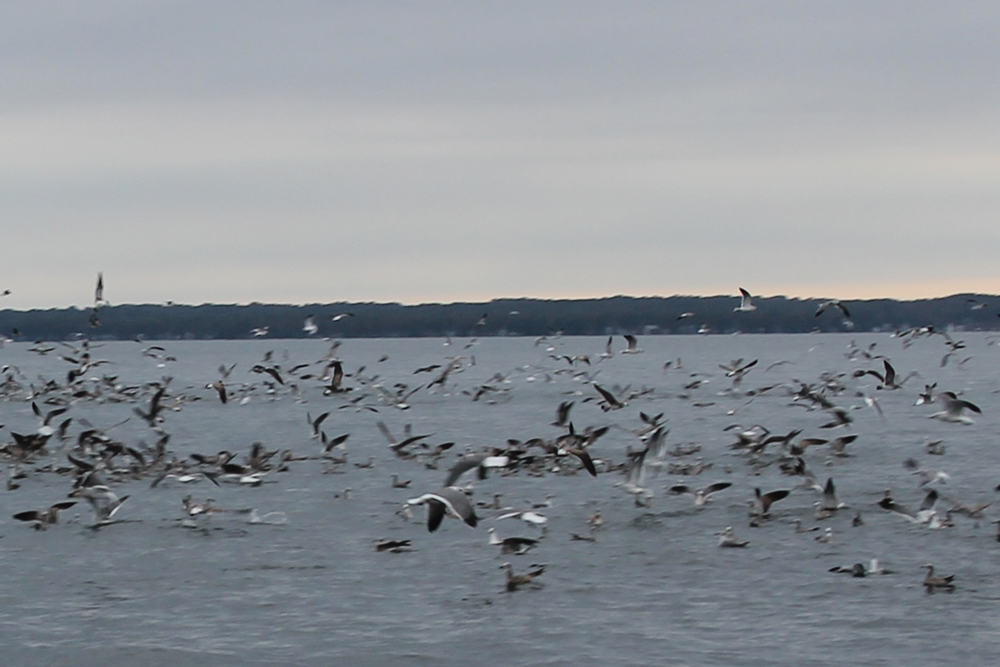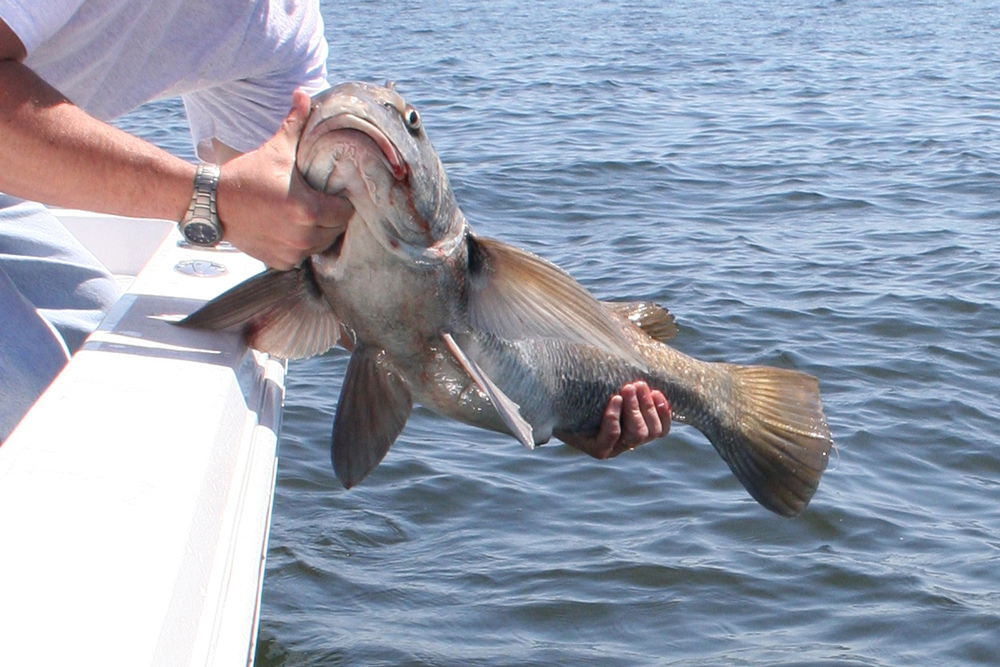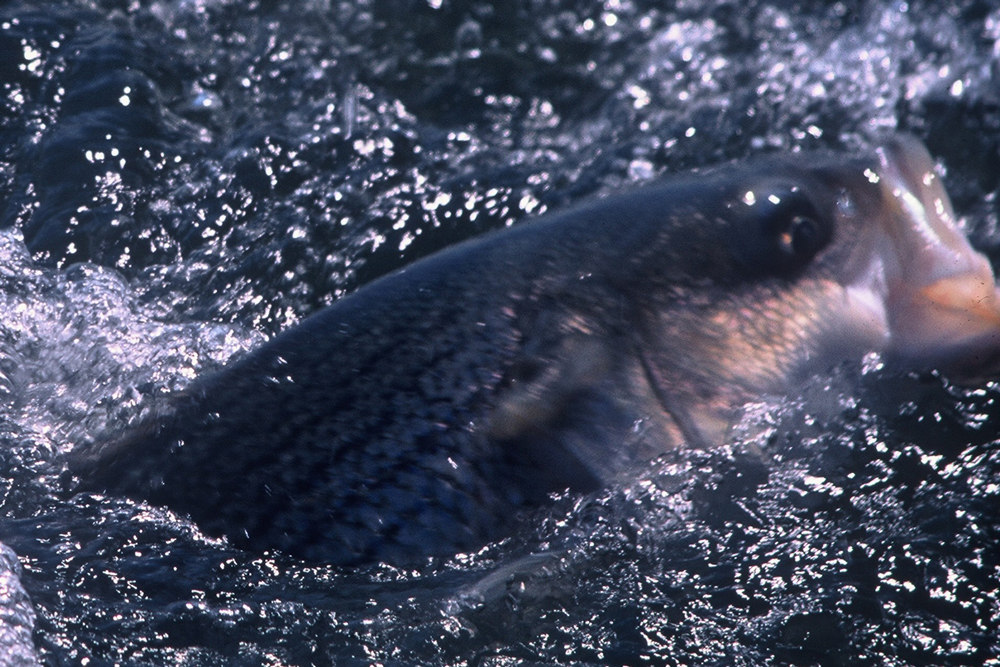Way South and VA Fishing Report, 10/26/2018 Update:
The mackerel bite is slowing down, almost to a standstill in northern areas of Virginia’s Bay, and blues are also thinning out a bit. On top of that, the big stripers haven’t begun their exodus back into the area for the winter as of yet. It’s a weird time to be, in the middle of incoming (we hope!!!) rockfish and outgoing macks and blues. But fortunately, school-sized stripers have been spotted under flocks of birds from the mouth of the Potomac down to the mouth of (and up inside) the Rappahannock. Anglers tossing white bucktails and plastics have been catching plenty, and though the majority are undersized, some fish up to 23 or 24 inches are ending up in the cooler. If you don’t have a good set of binoculars on your vessel get some now, because spotting birds has become synonymous with fishing success recently.

Trolling is another topic at this time of year, with reports of small spoons in either silver or gold getting the fair share of smaller stripers and the remaining bluefish. Trolling near deep channel edges near the mouths of the tributaries has been the best bet for this week. Trollers farther south have been encountering some nicer blues, too, as these fish make their way south.
Anglers working the shallows along pier pilings and rip-rap are taking some stripers, mostly in the tributaries north of Mobjack, which is also about the zone where heading south specks have become more common - but are mostly small. Topwater at daybreak and four to six inch white plastics after that have been a good bet. Our Hampton contributor Chuck Harrison did get out last week and reported lots of specks around the HRBT, in the 12 to 15 inch range. There were also still small blues in the area.
Specks have also been the main bite in the inlets (Rudee has been particularly good), where white, lime, and pink soft plastics fished on half-ounce to one-ounce jig heads have been reported as winners. Gulp was mentioned repeatedly as a top pick. Unfortunately, however, the average size of the specks remains small in these waters, too. Some reds have been mixed in with the catch, including slot fish up into the mid 20s.
Small blues have also been swarming in the waters around the CBBT, making life difficult at times for anglers in search of other species. (Chuck also mentioned plenty of missing tails at the HRBT). Flounder fishermen are picking up a fish here and there, but it’s not a bite to be excited about. The same may be true for the redfish, which saw an up-tick earlier this month and may well still be around in decent numbers, but we didn’t hear much about ‘em this week. Sheepshead also seem to be thinning out as the water temps fall, however, keep dropping those sand fleas and crab chunks next to the island and piling structures to pick up tog, which should bite better and better as the water cools.
Way South and VA Fishing Report, 10/19/2018 Update:
Along the northern Neck it’s time to consider shallow water, people, shallow water. Stripers plus an occasional speck are hanging near piers, shallow drop offs, and rip-rapped shorelines. Swimming shads and topwater lures in the morning and evenings when near the mouths of the Western Shore rivers have provided steady action and a treat for the eye when large stripers smack the plugs into the air. For sub-surface lures, white and albino or “glow” colors have been hot. The colder temperatures haven’t quite permeated the southern sections of the Bay yet, so keep in mind that the topwater bite can slow down after a short window at daybreak, which re-opens at dusk. Out in open waters the jigging has been consistent when bringing up schoolie stripers, plus some Spanish mackerel and small bluefish. Birds often give away the location of the schools. Trolling gets better the more south you operate your boat, and has been culminating in a great amount of action when pulling spoons, red and green hoses, and chartreuse paddle-tails off the mouths of the rivers. Straggling red drum are certainly also still out there ready to be had.

Farther south, Capt. Stan on the Blind Date stayed inside the Bay recently and discovered that the fall speckled trout run has begun. As has been the case in much of the region recently white has been a top color choice, and we also had reports of specks coming from the Poquoson and HRBT areas, plus Lynnhaven and Rudee inlets. Most, however, have been on the small side, and frankly we’re relieved to hear of a speck run at all following last winter’s kill and a lackluster spring and summer season; all of that said the numbers being caught right now certainly aren’t what we’d hope for in late October.
Anglers working the CBBT and HRBT have been picking up some keeper stripers on jigs and also while trolling spoons, while those fishing bait have encountered an increasing number of drum. Crab is the ticket, and it will also still produce some sheepshead when fished right up against the structure, though sand fleas remain the best bait for targeting this species. An interesting turn of events has to do with bluefish, which have been popping up in the same areas – but in much larger sizes than expected considering how warm the water remains. Several fish over 30 inches were reported this week. It’s a little early to call it a fall “run,” but be prepared for some potential encounters with these tackle-busters.
Flounder fishing, meanwhile, remains below par. Bottom fishermen are encountering more spot and croaker, with occasional specks and blowfish grabbing their bloodworm and squid bits as well.
Way South and VA Fishing Report, 10/11/2018 Update:

A bit farther south, correspondent Chuck Harrison reported speckled trout up to 16 inches at the HRBT, plus small flounder and lots of small tail-eating blues. At the CBBT, meanwhile, anglers dropping sand fleas and crab bits in close to the structure are still catching sheepshead, while larger crab baits are attracting the attention of bull redfish up to over 35 inches here and there plus some smaller black drum. Unfortunately, flounder fishing there remains below par. Trollers working near the CBBT, however, have encountered a few Spanish mackerel but more impressively, some nice chopper blues in the five to 10 pound range, on spoons.
Stripers are now in play in Virginia's waters, people! The best bites have been in the Northern Neck area, particularly in the Rappahannock, although the strong freshwater flow and some discolored water still pushing out of the river (as well as all the western shore tribs) seems to be keeping most of the action to down-river areas and in the Bay. The Route 3 bridge and points farther out have been the best bet, with bait anglers upriver of this zone reporting catfish, catfish, and an occasional catfish thanks to all the freshwater. Working the down-river shallows with topwater at daybreak and jigs (white and pearl have been the hot colors) after the sun is up has been a better way to focus on stripers up into the low to mid 20s. Speckled trout have been showing up in better numbers, too, though the vast majority are very small. Out in the main-stem Bay there have been birds working over schools of breaking fish with stripers in the mix. Many, however, are undersized and it may be necessary to fish deep under the main school, or leave fish to find fish, in order to put keepers in the box. Snapper blues have also been problematic for those casting soft plastics; bring plenty of extra tails, or switch to the un-bite-able Z-Mans.

Both jiggers and trollers working at the mouth of the river and off Stingray Point have also run into some scattered big red drum as they make their way south with the cooling temperatures. The bulk of the catch for those spotting birds, however, has been undersized blues, rock, and some decent Spanish mackerel. Small spoons have been the most productive offering for the mackerel and blues.
Redfish have also been popping up along the western side down to the York, as well as at the CBBT. Also at the CBBT, the sheepshead bite continues to be strong for anglers dropping sand fleas and peeler crab chunks very close to structure and these are the same folks who have been surprised at times by big reds inhaling their baits. The spadefish, on the other hand, seem to have thinned out a bit. We did get a reader report of some near the first island, but they were small and in short supply. There are still cobia around, too, but remember that as of the end of last month they must now all be released. As for flounder at the CBBT… we have no good news.
Some bigger news from the area: kingfish have come on strong off the coast of VA and many anglers with boats that can make the run 15 or 20 miles out have shifted their sights on these drag-burners; see the Coastal Reports for details.
-By Parker Martin